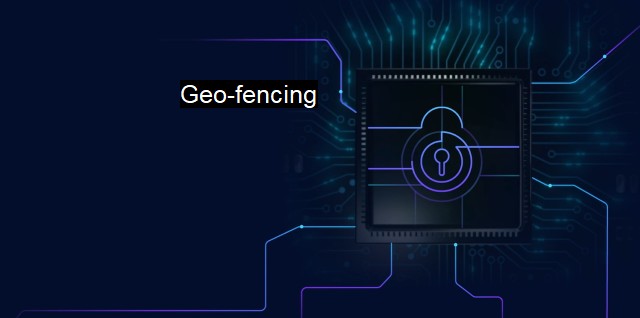What is Geo-fencing?
Geo-Fencing: An Innovative Tool for Cybersecurity and Antivirus Protection
Geo-fencing is a technology that uses the Global Positioning System (GPS) or radio frequency identification (RFID) to define geographical boundaries. Known, quite appropriately, as a geo-fence, this mechanism can be dynamically designed in terms of radius around a point location or pre-defined in a predefined geographic area. With this technology, one could receive alert entering or leaving a geo-fenced region, helping apps detect where you are and adjust accordingly, generating insights based on a user's real-time position. as this is seen as a powerful innovation deed for drastic digital transformation, it equally involves potential vulnerabilities in the digital security landscape. Thus, the context of geo-fencing becomes critically important in cybersecurity and antivirus paradigms.In cybersecurity terms, geo-fencing technology involves setting up virtual boundaries for the protection of data and ensuring the right access to appropriate users using geographic location as a determinant. These features are being frequently absorbed by antivirus solutions to help promote better protection for internet-connected systems and devices.
a business may integrate geo-fencing into its security measures to automatically lock devices containing sensitive data once they leave the office premises, reducing the risk of data breaches. In personal terms, parents might set geo-fences to monitor and restrict kids' use of digital devices within home boundaries. These scenarios demonstrate how geo-fencing could lead to smarter cybersecurity strategies and antivirus protection.
It's fantastic that geo-fencing offers location-aware intelligence to security frameworks, but it can also pose a risk to data privacy. As it can track location constantly, it can lead to potential misuse of classified information and semantic inferences about the user's behaviour. In terms of antivirus security, the wrong use of geo-fencing can expose systems to cyber risks or threats because of misconfigured geo-boundary conditions or detection that shaving-off the precision of location data, notably on mobile devices.
Geo-fencing can also be used in relation to combating certain types and aspects of cybercrime. It can help to set and enforce policies that limit access to systems and information based on the geographic location of the user or device, thereby blocking users in regions noted for high levels of certain types of cybercrime from interacting with a system. It strengthens the antivirus technology by allowing for more controlled and managed access, fore-stalling possible malicious intrusion attempts.
Like any technology, geo-fencing has its limitations. As it heavily depends on the accuracy of location data through GPS tracking, it can suffer from common GPS problems, such as signal disruption and accuracy issues. These problems can lead to security systems making false-positive or false-negative decisions, leading to unnecessary system alarms or compromising an entry point for hackers.
Geo-fencing hence plays a crucial role not only in managing and transforming digital business strategies but contributing significantly in data protection and security platform. Security developers and systems are harnessing its benefits to impart intelligent protection services through antivirus software. The shared alignment of cybersecurity and geo-fencing offers several ways to ensure ongoing protection for user devices that balance carefully between usability and security, a balancing act that is fundamental hint to this era of constant technological acceleration.
From providing a vital line of defense by setting access according to geographical boundaries, synthesizing patterns for detecting intrusions to restricting potential zones recognized for delivering adware and malware, geo-fencing integrates in and escalates the level of significance of cybersecurity measures and antivirus technologies. The challenge lies in overcoming the limitations while appreciating and utilizing the strengths so that geo-fencing can serve as an impactful ally in the vast and complex landscape of cybersecurity and antivirus protection.

Geo-fencing FAQs
What is geo-fencing and how is it used in cybersecurity and antivirus?
Geo-fencing is a technique used in cybersecurity and antivirus to restrict access to certain areas or locations. It creates a virtual boundary or fence around a particular area or location, and whenever any device or user tries to access that area, the system sends an alert or blocks the access. This technique is used to prevent unauthorized access to sensitive data, secure networks, and protect against cyber threats.Can geo-fencing detect malware and viruses?
No, geo-fencing cannot detect malware and viruses directly. It is a technique used to restrict access and create a virtual boundary around a particular area. However, it can be used in conjunction with other cybersecurity and antivirus measures to prevent malware and virus attacks by restricting access to particular locations or areas.What are the benefits of using geo-fencing for cybersecurity and antivirus?
Geo-fencing offers several benefits for cybersecurity and antivirus, including restricting access to sensitive data or networks, detecting unauthorized access, preventing cyber threats, and enhancing overall security. It also enables real-time monitoring of data and devices, allowing organizations to respond quickly to any security breaches or threats.Is geo-fencing a foolproof cybersecurity solution?
No, geo-fencing is not a foolproof cybersecurity solution. While it provides an additional layer of security, it is not a substitute for other cybersecurity and antivirus measures such as firewalls, antivirus software, and strong passwords. It is important to implement multiple layers of security to protect against increasingly sophisticated cyber threats.Related Topics
Mobile Device Security Cyber Threat Intelligence Endpoint Security Mobile Application Security Data Loss Prevention
| | A | | | B | | | C | | | D | | | E | | | F | | | G | | | H | | | I | | | J | | | K | | | L | | | M | |
| | N | | | O | | | P | | | Q | | | R | | | S | | | T | | | U | | | V | | | W | | | X | | | Y | | | Z | |
| | 1 | | | 2 | | | 3 | | | 4 | | | 7 | | | 8 | | |||||||